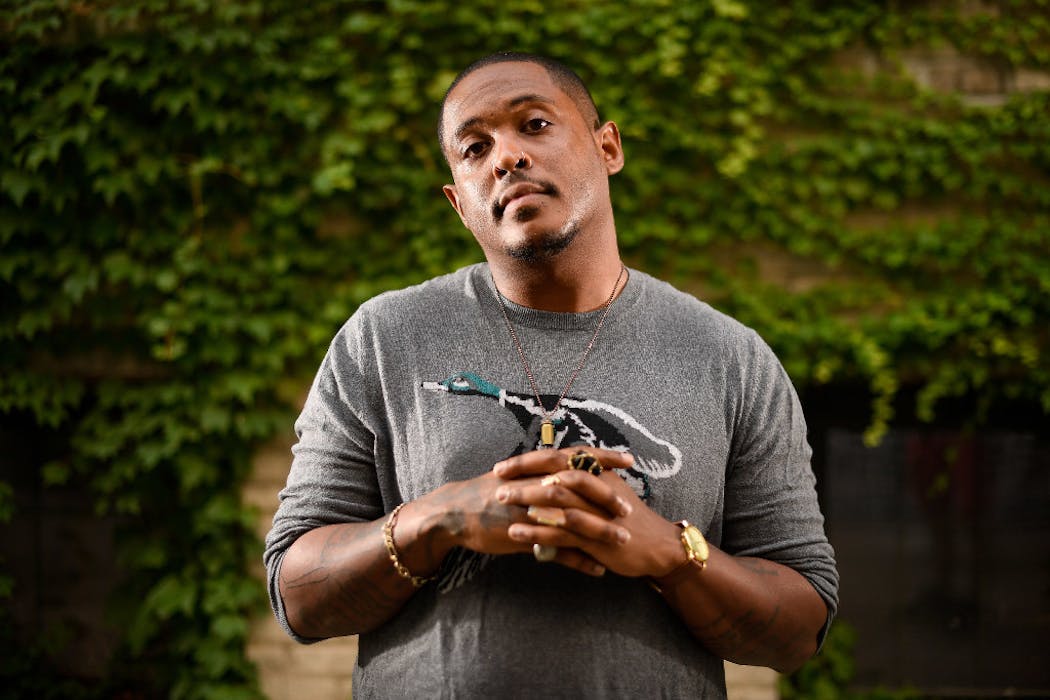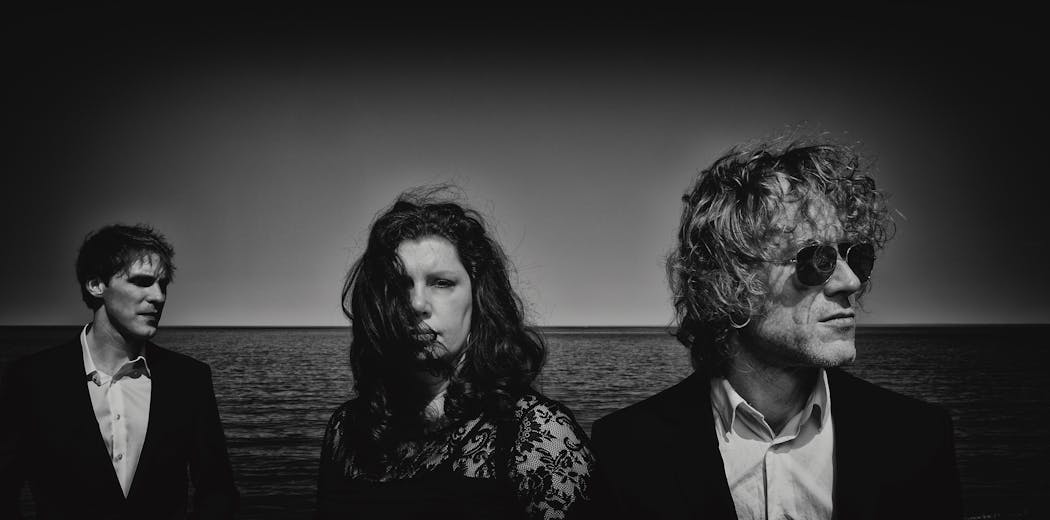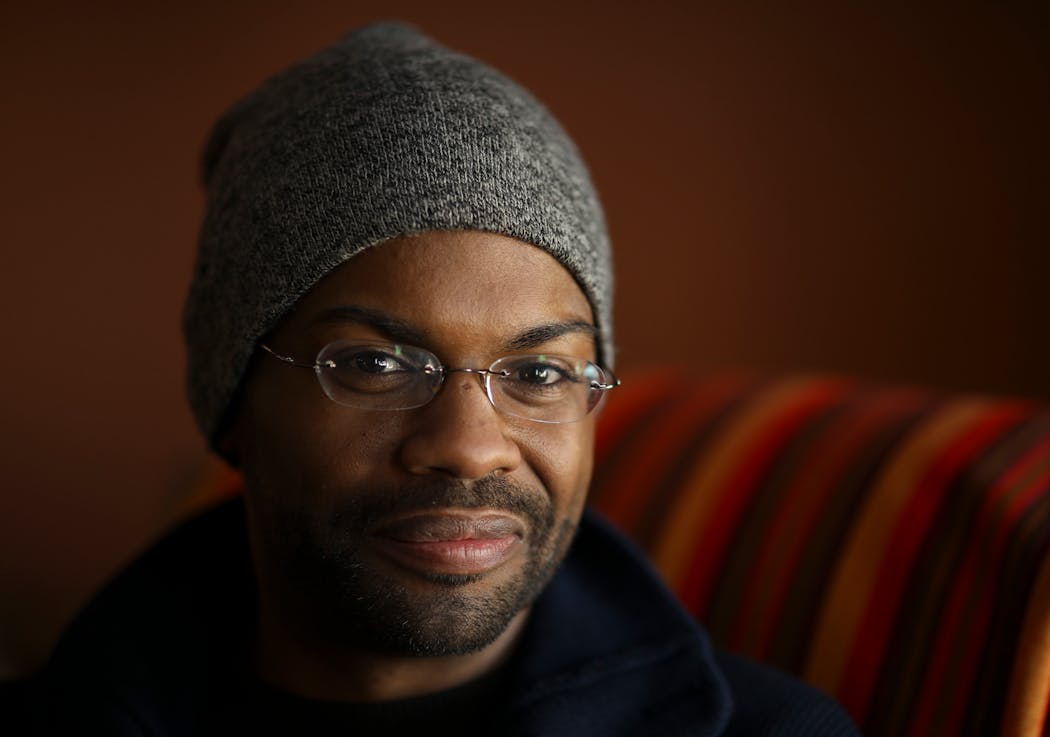Our Artist of the Year for 2018 is Sarah Rasmussen of the Jungle Theater. Here are five other Minnesota artists who had a great 2018.
Dessa: Rapper/writer commanded all kinds of stages
Dessa sang and rapped, spoke and read from very different stages this year.
She packed clubs across the United States and Europe, performing songs off her new album, "Chime." She warmed a snowy Nicollet Mall for Super Bowl Live and stood center court at Target Center to perform the national anthem at the WNBA All-Star Game. At the Fitzgerald Theater and in a dozen bookstores, she read slices of her debut memoir, "My Own Devices," released this fall.
But no stage better displayed the range of her talents than Orchestra Hall.
For two nights in October, Dessa took over, inviting break dancers into the hall's lobby and serving a whiskey blend that bears her name. Clad in a cape and black lace-up boots, the Doomtree rapper turned her best tunes into better tunes with a full orchestra and a few harmonizing friends. She charmed the audience with mini-monologues. She read from her book, too.
Before launching into "Fire Drills," its lyrics made for this moment, Dessa pitched the premise to a nodding crowd: "Our culture tells us that the world can be a dangerous place for women — and that's true. But it goes on to tell us that it's incumbent on women to avoid these dangers" — don't go out alone; don't go out at night. The song, then, is "about calling out the absurdity of asking people to secure their safety by hiding, by leaving vast swaths of their lives unlived."
Then she jumped into the audience, belting the final chorus of her song "5 Out of 6" while balancing on a pair of armrests.
JENNA ROSS
Danez Smith: The rare poet who became a breakout star
It was late 2017 when Danez Smith's breakthrough collection of poetry, "Don't Call Us Dead," was published by Minneapolis-based Graywolf Press and named a finalist for a National Book Award.
But it was 2018 when Smith really broke out. Suddenly, they were everywhere! (Smith prefers nonbinary pronouns.)
This year, Smith — who was born in St. Paul and lives in Minneapolis — was published in Poetry Magazine; in the anthology "50 Poems for Our Time," edited by U.S. poet laureate Tracy K. Smith; in the New Yorker. (And tweeted: "Woke up published in the New Yorker, feeling mighty mighty.")
Smith was a judge for this year's National Book Award for poetry. They traveled all over, reading and speaking about poetry. (And Instagrammed the poster for a Seattle event: "Seeing my face on things will never not be really weird.")
They headlined the Lagos International Poetry Festival in Nigeria and went to London for the Forward Prize for Poetry ceremony — becoming the youngest ever winner at 29. (And tweeted: "I am: floored, stunned, beyond grateful, getting a neck tattoo, in shook, humbled, giddy, dancing, aware, alive …")
Just for good measure, they won the inaugural Four Quartets Prize, established by the T.S. Eliot Foundation with the Poetry Society of America, and made Forbes magazine's 30 Under 30 list.
What's next? What could possibly be next? A new collection, that's what. "Homie" is due from Graywolf in 2020.
LAURIE HERTZEL
Low: Duluth rock trio turned 25 by turning its sound on end
The Guardian in England called it "the sound of the world unraveling." Rolling Stone warned that listening to it is "like looking into another, incredible dimension."
Those shocked-and-awed reactions were shared by longtime Low fans upon first hearing the hum-to-roar Duluth rock trio's 12th album, "Double Negative." Not the kind of record you immediately fall in love with, its appeal is more like falling down a rabbit hole and trying to make sense of the odd wonderland of staticky electronic beats, warped organs, willowy synthesizers and, yes, straight-up gorgeous, harmonious vocals — the latter the only constant trait of married bandmates Mimi Parker's and Alan Sparhawk's work.
Low has made many wildly varying records in a quarter-century, reinventing itself enough times that even Radiohead's and Wilco's members follow with deep admiration. In this case, the band was prodded into a deep exploration by whiz-kid Minneapolis producer BJ Burton (Bon Iver, Lizzo) and indirectly by President Donald Trump, it seems. The poetic lyrics about conflict, ego and humanity in such songs as "Disarray" clearly didn't come from watching "Desperate Housewives."
But the biggest artistic surprise from Low came through mind-blowing "church-organ concerts" in a few lucky cities, including Austin, Texas. As bassist Steve Garrington pumped away on an Austin church's organ during South by Southwest, Sparhawk and Parker stood idly breaking bread (literally), dropping beats and singing with holy-water-like fluidity about religion, marriage, death and divinity.
CHRIS RIEMENSCHNEIDER
Harrison David Rivers: Playwright made his mark on four local stages
For playwright Harrison David Rivers, it was the cherry on top of an ice cream sundae kind of year.
Two weeks ago he won the $45,000 Relentless Award, a new-play prize established in honor of the late actor Philip Seymour Hoffman. Rivers won it for "The Bandaged Place," a play about surviving domestic violence in a same-sex union.
"The Bandaged Place," which was workshopped last spring at the Playwrights' Center in Minneapolis, is one of four Rivers plays on Twin Cities stages this year. Two were world premieres — "Five Points," a musical that sold out its run at Theater Latté Da, and "A Crack in the Sky," a Somali man's coming-to-America story that played at the History Theatre. And "This Bitter Earth," about an interracial same-sex couple, had its regional premiere at Penumbra.
"It's rare for an artist to have so many opportunities at one time, such a happy accident," Rivers said a few days ago. "I moved to the Twin Cities 4½ years ago, and have developed some great friendships and partnerships with local theater."
Next up: "To Let Go and Fall," a memory play about two dancers reconnecting after years apart, premieres in the spring at Theater Latté Da.
"My work is about telling stories that members of the community are also interested in telling," Rivers said. "It's been a great 2018."
ROHAN PRESTON
Siah Armajani: Ever curious artist is still questioning at 80
Minneapolis-based artist Siah Armajani is almost 80, but he is still workin' it.
This year saw the circular-spectacled intellectual celebrating a 60-year career retrospective, "Follow This Line," at Walker Art Center. After it closes Dec. 30, it will travel to the Met Breuer in New York in February.
Armajani arrived in Minnesota in 1960 as an exile from Iran, and enrolled at Macalester College in St. Paul. He has been here ever since. His most visible work is the bright yellow and blue Irene Hixon Whitney Bridge over Hennepin Avenue and Interstate 94, but that is just one of many public works around the Twin Cities, including two downtown skyways, a garden at the University of Minnesota, a gazebo in Loring Park and a pocket park in Wayzata.
Through it all, the prolific sculptor's work conveys his support of democratic ideals. Naturally, Armajani is most influenced by philosophers, political theorists and poets. He prefers not to be interviewed or photographed, but to let his work speak for itself — and for him.
An unstoppable, curious artist whose mind is always moving, Armajani is still in the process of creating the latest series reflected in his retrospective show. The life-size sculptures in "Seven Rooms of Hospitality" exemplify the inhumane conditions that refugees, asylum seekers and other immigrants grapple with. These are things that Armajani takes seriously, and hopes the viewer will, too.
ALICIA ELER

Gophers football coach P.J. Fleck lists 'resort-style' Edina home for $3.9 million
Mexican film wins top prize at Moscow International Film Festival while major studios boycott Russia
Why you might have heard Paul Simon's 'The Sound of Silence' at Spanish Mass

Minneapolis native Poppy Harlow parts ways with CNN





